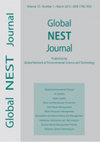基于遗传算法的合成孔径雷达溢油自动检测
IF 1.2
4区 环境科学与生态学
Q4 ENVIRONMENTAL SCIENCES
引用次数: 2
摘要
本研究利用遗传算法进行溢油自动检测。将该方法应用于墨西哥湾RADARSAT-2 SAR扫描序列的窄单波束数据。研究表明,跨界的实施可生成准确的浮油模式。这是通过使用接收器工作特性(ROC)曲线来证实的。ROC曲线对浮油足迹的认可度为90%,高于其他周边环境特征。可以说,ScanSAR窄单波束传感器在溢油探测和测量中具有巨大的应用前景。综上所述,遗传算法可以作为溢油自动检测工具。本文章由计算机程序翻译,如有差异,请以英文原文为准。
GENETIC ALGORITHM FOR OIL SPILL AUTOMATIC DETECTION USING SYNTHETIC APERTURE RADAR
This work has exploited a Genetic algorithm for oil spill automatic detection. This is implemented to sequences of RADARSAT-2 SAR ScanSAR narrow single beam data in the Gulf of Mexico. The study shows that the implementation of crossover is generated an accurate oil slick pattern. This is confirmed by using the receiver–operational characteristics (ROC) curve. The ROC curve endorses the existence of oil slick footprints with 90%, which is larger than other surrounding environment features. It can be pronounced that ScanSAR Narrow single beam is the tremendous promise sensor for oil spill detection and survey. In conclusion, the Genetic Algorithm can be used as an automatic detection tool for oil spill.
求助全文
通过发布文献求助,成功后即可免费获取论文全文。
去求助
来源期刊

Global Nest Journal
环境科学-环境科学
CiteScore
1.50
自引率
9.10%
发文量
100
审稿时长
>12 weeks
期刊介绍:
Global Network of Environmental Science and Technology Journal (Global NEST Journal) is a scientific source of information for professionals in a wide range of environmental disciplines. The Journal is published both in print and online.
Global NEST Journal constitutes an international effort of scientists, technologists, engineers and other interested groups involved in all scientific and technological aspects of the environment, as well, as in application techniques aiming at the development of sustainable solutions. Its main target is to support and assist the dissemination of information regarding the most contemporary methods for improving quality of life through the development and application of technologies and policies friendly to the environment
 求助内容:
求助内容: 应助结果提醒方式:
应助结果提醒方式:


